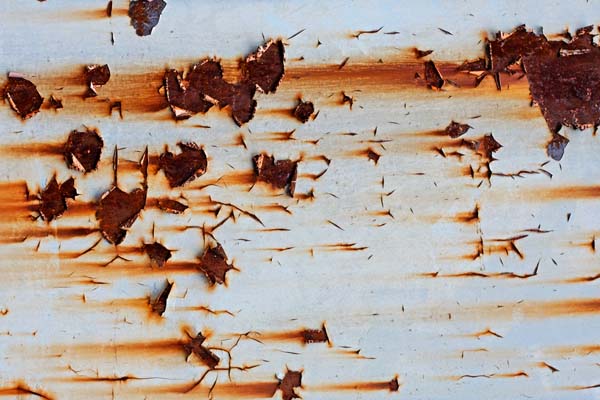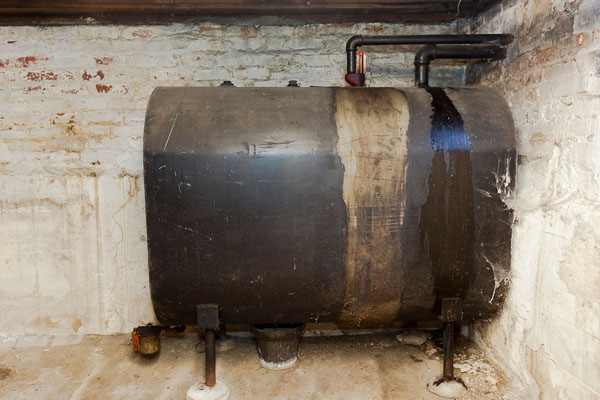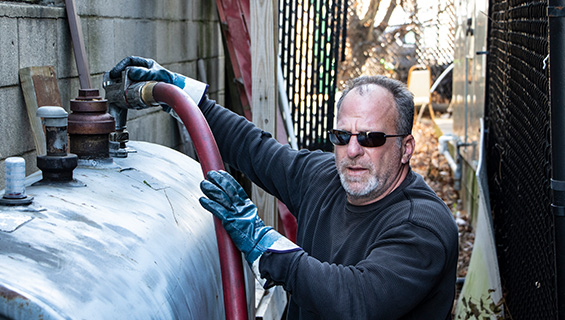Oil Tank Condensation: What To Be Aware Of

Oil heating systems use tanks to store fuel oil safely and securely. For the most part, this works very well, but there can be some complications. For example, moisture can collect within the tank and this can cause problems. The good news is that oil tank condensation is a preventable problem and easily dealt with.
Oil Tank Condensation: What You Need To Know
Table of Contents
- 1 Oil Tank Condensation: What You Need To Know
- 2 Call Hart Home Comfort For Your Home Heating Requirements
Continue reading below to understand more about the issues with condensation in oil tanks. We also share some effective prevention strategies.
How & Why Water Gets Into Your Home Oil Tank
Water is an abundant natural element and can exist in many forms. Small amounts of moisture can enter the heating oil tank over time and this can cause problems. If you can figure out how the water is entering your tank, you will be in a better position to avoid this issue.
1. Rainwater

If your tank is located in a place where it is exposed to the rain, this could be problematic. Rainwater is a persistent foe and can get into the narrowest gaps and seals, even lids that are not securely fastened. Tanks situated near a building may get the added strain of rainwater runoff. Older tanks may have small cracks and openings in the tank walls or the seals.
2. Condensation
No matter where the fuel oil tank is located it will always be susceptible to condensation. Air vents allow for the passage of air and with this comes water vapor. If the temperatures of the tanks reach a sufficiently low level, the vapor will condense and turn to water. This will cause water droplets to form and these will eventually drop into the tank. A small amount of condensation is expected over time, but if allowed to collect in larger amounts unchecked, the situation can get very bad.
3. Groundwater
Underground fuel oil tanks can receive water from the ground itself. If the container walls are not properly sealed and in optimal conditions, water may be allowed to pass through. This is a serious problem not just because of the moisture getting in, but this also gives a chance for the oil within to get out. The result leads to a problem that needs to be addressed immediately. If you notice any damage to an underground tank, call for professional assistance.
What Happens If Water Gets into My Heating Oil Tank?

Oil floats on water so it will not be easy to tell if water has gotten into your tank through observation alone. The problem is compounded by the inaccessibility of looking inside an underground fuel tank. Because of this, water can remain undetected within the fuel tank for a long time and this can be especially problematic, for your tank, heating oil system, and fuel. The problem may escape detection until the symptoms of the situation are impossible to ignore.
The best course of action will be to take proactive measures to prevent water damage. Regular inspections are the first line of defense against these issues. To perform a routine check, use a water-finding paste. The exact product can be found in your manufacturer’s warranty or from a fuel oil expert. Place this on the bottom where water will likely collect. The color will change in the presence of water. If a large amount of water is present, you will need to seek professional help.
How To Prevent Heating Oil Tank Condensation
Now that you know some of the ways that moisture can enter your tank, let’s examine so ways to prevent this crisis. Here are some preventative measures to avert a crisis:
1. Check the Fuel Oil Tank

Make it a part of your routine to check the tank for any visible signs of damage. This could include dings, nicks, scratches, rust, chipping, etc. Also, check the conditions of the caps and seals, and make sure they are all in good condition and properly closed.
2. Test for Water
A regular visual inspection will not always be enough to catch water before the damage. The water-finding paste can allow you to detect the presence of water in the bottom of your tank. If you have an underground tank, use a soil contamination test regularly to check for contamination, which can alert you to holes in your tank and the need for immediate action.
3. Protect Oil Tanks from Heat
Install a new tank somewhere shady and paint it with reflective paint to keep it safe from the heat. This reduces the chances of condensation forming when the tank is dropped from high to low temperatures.
4. Keep Your Tank Full

The more air that can come inside your tank, the more vapor can enter with it. This increases the amount of moisture in your tank and the potential for condensation. This can be prevented by scheduling timely heating oil deliveries and keeping your tank full at all times, during both the low and high seasons.
5. Call in the Pros
Professionals can inspect your tank and make important suggestions on keeping it in great shape. If you will be buying a new tank, they can make recommendations on the best possible storage locations and other important factors.
How A Professional Removes Water From Your Oil Tank
If a moisture test results in a positive result, you will need to remove the water. There are three ways that this can be accomplished. It is always best to allow a professional to handle this task. Here are some of the steps that a professional will take to remove the water.
- Drain: Metal tanks have a valve for releasing sludge at the bottom of the tank. A professional will be able to open this valve and remove the water. Sometimes some of the oil will escape as well. A professional will know how to collect this liquid and dispose of it properly.
- Pump: Plastic tanks are not usually equipped with this type of valve, but a hand pump can also be used for a small amount of water. If there is a lot of water in the tank, this method may not be enough.
- Absorb: A professional may also use a water-absorbent sock to collect the water at the base of the tank. These socks will have to be swapped out regularly and disposed of properly.
Potential Damages of Not Removing Water From Your Oil Tank
- Oil Tank Rust: Some people may think that allowing the water to collect in the tank is not so bad. But water can cause damage to the walls of the tank and the heating system itself. The majority of steel oil containers will begin to rust from the inside. A steel tank may look like it is in good conditions outside, but it could be very corroded inside.
- Freezing: Oil will not freeze even in the coldest winter, but water freezes at a mere 0°C or 32°F. When water freezes the flow of fuel to your home can be stopped — which can be a very bad thing in the middle of winter.
- Bacteria: Bacteria can thrive in the smallest amounts of moisture. When these organisms multiply, they can begin to affect their environment. They can turn to sludge at the base of the tank and also create an acidic compound that creates corrosion in the tank walls.
Conclusion
Water should be kept out of your oil tanks to avoid problems with your heating. The strategies listed above can help prevent any mishaps that result from condensation in an oil tank.
Call Hart Home Comfort For Your Home Heating Requirements
 When you need superior HVAC services in the area, do not hesitate to call Hart Home Comfort. We have the best professionally certified technicians who can conduct high-quality heating and cooling services, including maintenance, repairs, replacements, and installations. All our friendly techs are equipped with the correct tools, extensive knowledge, and years of experience to service any HVAC system accurately.
When you need superior HVAC services in the area, do not hesitate to call Hart Home Comfort. We have the best professionally certified technicians who can conduct high-quality heating and cooling services, including maintenance, repairs, replacements, and installations. All our friendly techs are equipped with the correct tools, extensive knowledge, and years of experience to service any HVAC system accurately.
Our company has the most competitive and affordable home comfort service costs in the area. When you need to replace your HVAC system, we can recommend the best and most budget-friendly unit for your home. Schedule an appointment with Hart Home Comfort today for a free, in-home estimate.
We also offer fast and reliable home heating oil deliveries. You can choose from one of our many financing plans and delivery options. This way, you can customize your oil deliveries to meet your needs. Hart Home Comfort delivers EcoBlend Bioheat® heating oil, a blend of high-quality ultra-low sulfur heating oil and biodiesel. By ordering your fuel from us, you can help reduce carbon emissions and help the environment, while taking advantage of our superior oil delivery services. Call today to schedule a full delivery for your home or office.
For any questions about what Hart Home Comfort can do for you, give us a call today. Click here to contact us now or call us at (631) 667-3200 to find out more!
